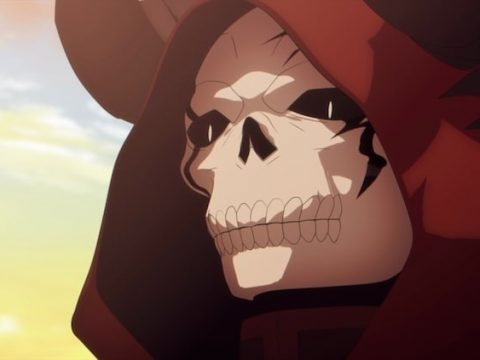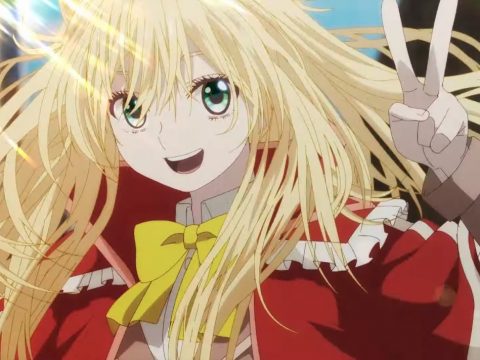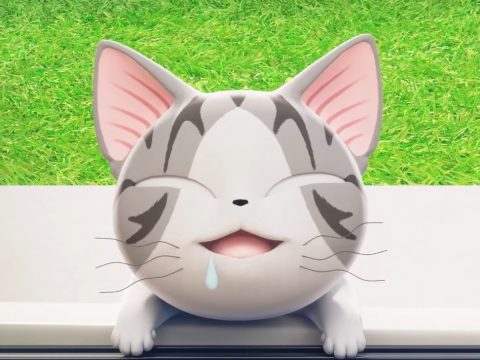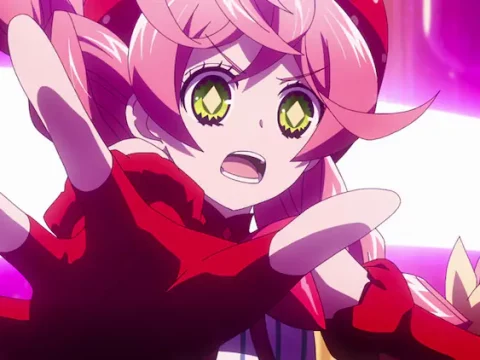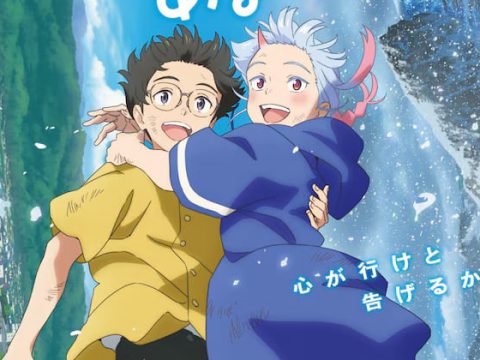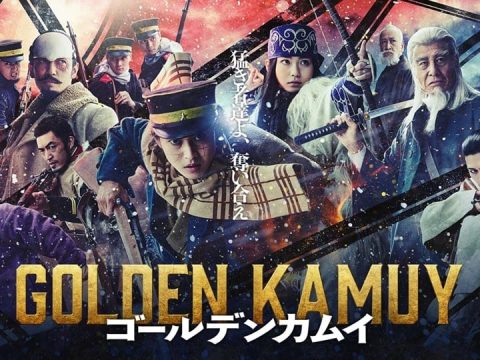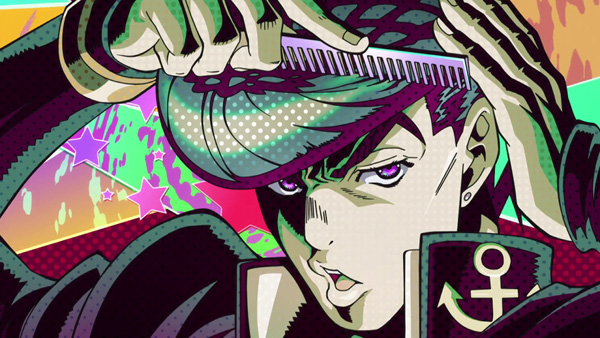
Never in my wildest dreams would I have guessed that one of the most beloved anime titles of the 2010s would be a virtual word-for-word, scene-for-scene reenactment from a manga dating back over 20 years. I never thought I’d see the day where Hot Topic would be successfully selling T-shirts of a title from the classic shonen era, the kind where a villain might vent his frustrations by biting off the face of a random stranger’s dog and it doesn’t turn audiences away because at that point the viewing audience has accepted that all dogs shown suffer graphic dismemberment.
Yet here we are. For the last four years, Jojo’s Bizarre Adventure by Hirohiko Araki has achieved a global renaissance in popularity thanks to simulcast streaming of its television anime adaptations by the animation studio David Production and the guiding hand of director Naokatsu Tsuda, resulting in not just new video games and merchandise but high-quality English reprints of the manga. Its latest installment to be made anime, sub-titled Part 4: Diamond Is Unbreakable, is currently airing, and don’t worry if you haven’t seen all of the 74 episodes prior that comprise Parts 1 through 3 since each part of Jojo’s is so far removed from the others in terms of cast and time that they exist almost independently of one another. Yep, it’s a different main character whose nickname is “Jojo” embarking on a bizarre adventure every time.
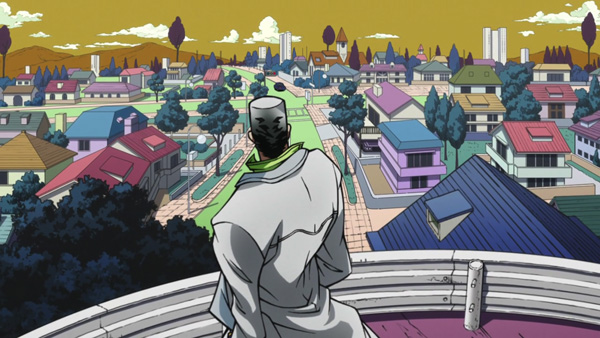
Certainly, the most popular installment historically was the preceding Part 3: Stardust Crusaders. Originally published in 1989 in the aftermath of the genre-defining success of Fist of the North Star, Stardust Crusaders introduced the aspect of Jojo’s that has defined it to this
day: supernaturally powered psychic manifestations of a person known as “Stands.” Its globe-trotting tale concluded with the defeat of the biggest and baddest Stand user of all: Dio, the glam vampire equivalent of Fist of the North Star’s Souther. But how can you possibly top a villain like Dio? You have to, right? That’s the rule of battle manga: each subsequent opponent has to be even stronger and more evil than those who came before, so now your heroes need another power up because it’ll let you sell new merchandise!
Hirohiko Araki elected to ignore that rule of storytelling, much as he does so many others, opting instead to go the opposite route. The first three parts of Jojo’s spanned the world, but Diamond Is Unbreakable is set within the confines of a small, old Japanese suburb named Morioh that is rather obviously derived from the author’s own hometown. There’s a limit to how many consecutive international vacations one can finagle from employers “for research purposes,” I guess. What’s more, if the enemies aren’t all bigger and badder than those who came before, our heroes needn’t be either … provided you substitute the excitement brought about by “shonen power creep” with something else.
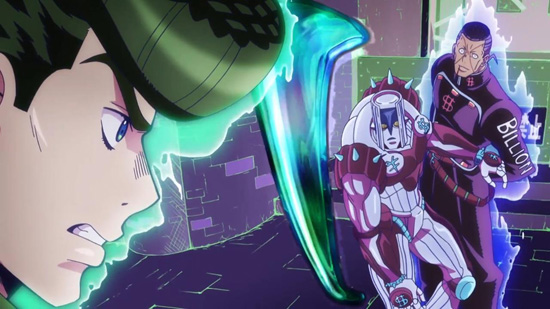
For Jojo’s Bizarre Adventure, that “something else” is “fabulousness.” Part 4 marks another stylistic turning point of the series, in which the visual similarities to Tetsuo Hara’s Fist of the North Star artwork start to gradually shift toward something entirely different altogether. The outfits become even more flamboyantly high-fashioned to further match the already outrageous poses while the characters become a bit more youthful and slightly less muscle-bound. Within the last decade, the long-running Persona series of video games has developed a large following in the US, thanks in large part to its aesthetics. For my money’s worth, this is a clear influence.
Eleven years have passed since Jotaro Kujo, the delinquent Clint Eastwood-inspired hero of Stardust Crusaders, caused Dio’s body to explode by punching him really hard in the leg. Now that Jotaro’s somehow gotten a doctorate in marine biology and is all grown up—despite looking younger due to the art style—our “Jojo” this time around is high school freshman Josuke Higashikata, whose Stand “Crazy Diamond” (subtitled “Shining Diamond” in official US releases to avoid the potential wrath of Pink Floyd—see sidebar) is capable of reverting people and objects to previous states when it isn’t punching things rapidly and with great force.
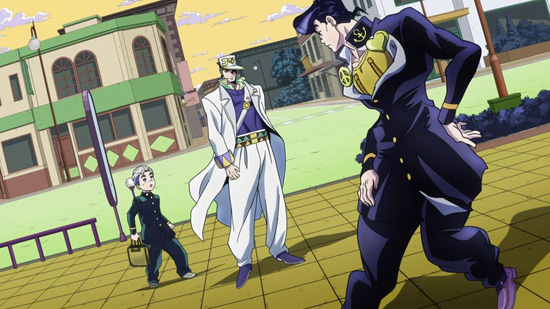
For reasons that quickly become clear, a large number of Morioh’s residents are developing Stand abilities while still trying to masquerade as regular people. The murderous milkman, your mass murdering next-door neighbor, your classmates, the guy who wants you to feel guilty just because you murdered his cat with a bicycle, the manga artist who’s clearly a self-insert of the author, the bona fide serial killer: yes, all of the recognizable members of suburbia and more are here and have developed terrifying Stand abilities for which raw powering up or unveiling of special moves is unlikely to turn the tide. When it comes to Stand user battles, victory relies primarily on one’s critical thinking skills: figuring out who is capable of doing what under which circumstances and then identifying a way to take advantage.
Everything old continues to be new again, as Jojo’s anime continues to bedazzle and astonish modern audiences, inspiring them to seek out manga written before many of them were born. Such is the power only a hit anime adaptation can bring! Maybe the world is ready for a City Hunter revival next…


